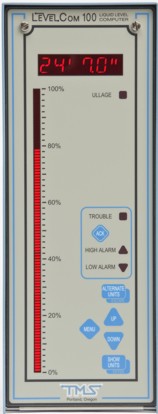
- Offshore support vessels have tanks equipped to carry and replenish drill mud on ships and rigs. Drill mud viscosity varies from free flowing to the consistency of pancake batter. Drill muds can be either water based or oil based.
- Specific gravity of drill mud can vary greatly from one batch to the next causing difficulties for in tank pressure sensor measurements. Rigs use the mud for different stages of drilling.
- Specific gravity readings let the rig know the type of mud it is and in what tanks it should be placed. Accurate level sensing required to prevent tanks from overflowing on deck.
- Solids in the mud mixture tend to coat and cake on any electronics in the tank causing them to misread and fail.
CHALLENGE
Offshore support vessels range in size from 150 to 375 feet long and have multiple tanks to transport mud and supplies to drilling platforms and ships. Drill mud is an essential component of well drilling and is consumed in the rig’s operations. Supplies of the different grades of mud must be adequately maintained to enable rig operation.
Drill mud is a heavy liquid, the specific gravity can vary from 0.96 up to 2.40. Any pressure based measuring system has to be able to detect the specific gravity of the mixture. Buildup of solids from the mud can easily interfere with mechanical sensors, radar and ultrasonic sensing systems.
SOLUTION
A system consisting of 11 LevelCom LC-100’s with the Automatic Specific Gravity option was installed. The LC-100’s automatic specific gravity reading allowed for accurate tank level gauging along with detection of the different mud composition and variation in specific gravity.
Bubbler pipes in the tank were engineered to minimize solid buildup and facilitate clean out. A maintenance procedure for cleaning the bubbler pipes was established. The LC-100 Modbus communication interface provided tank level and SG data to the Vessel Management System. There have been no adverse effects on the LevelCom system since the system works without any electronics needing to be placed in the tank. The system has been installed on several OSV’s over the past 10 years and is continuing to provide repeatable level measurement in a very challenging environment.
